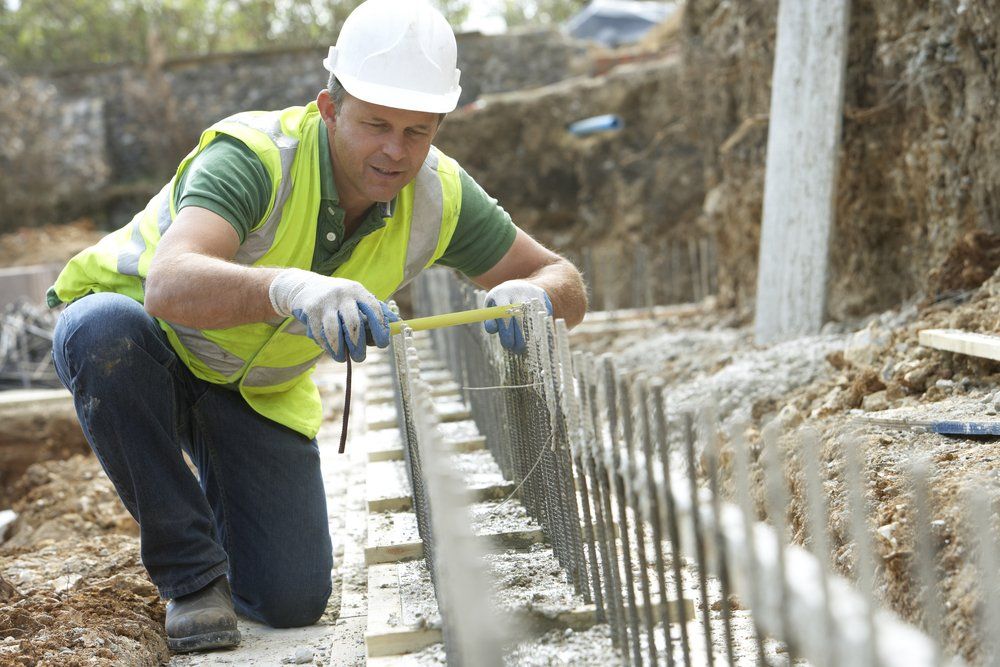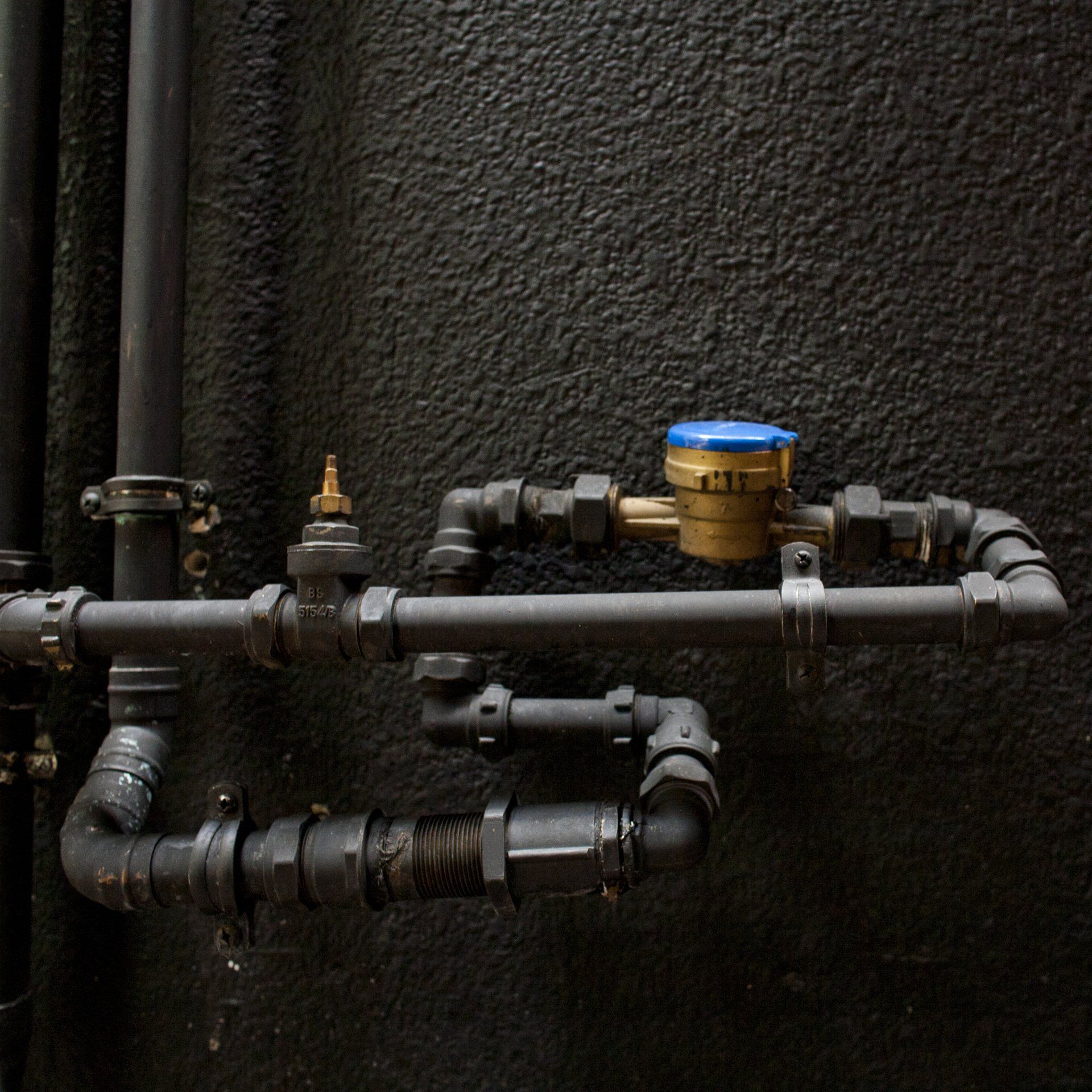
402-769-2943
The 7 Most Common Foundation Problems
The house's foundation is the most important part.

Without a strong base, everything else will be compromised and unable to withstand heavy winds or earthquakes that could cause major damage in an instant!
If you have a foundation, it's important to make sure that it is water-proofed. Otherwise, you could run into some serious problems down the road. In this blog post, we will discuss seven of the most common foundation problems and how to fix them. We'll also talk about how basement waterproofing can help prevent these problems from happening in the first place.
#1 Foundation settlement
One of the most common foundation problems is foundation settlement. This occurs when the ground underneath the foundation begins to erode, which can cause the foundation to sink or tilt. Foundation settlement can also lead to cracks in the foundation walls or floors.
When it comes to foundation settlement, there are a few things you should know. First off-the type of soil in your area will determine what kind is best for this task and also how much capacity each type has versus another with different properties like sand or clay;
Next depending upon where exactly the excavator is working (elevation changes) could affect their ability to get down deep without having too many problems accessing certain areas due either high elevations being present near buildings/roads etc., plus any construction galleries below grade may add yet another level entirely separate issue altogether called "topsoil" which needs its own special considerations because while compacted tightly together these layers form an excellent surface layer that retains moisture better than any other type around.
There are several ways to fix foundation settlement, but the most effective is usually basement waterproofing. By waterproofing the basement, you create a barrier between the soil and the foundation, which prevents further erosion and keeps the foundation stable.
If you want to fix the foundation settlement, you'll need to dig out around the edges of your house so that water can drain away from it. You may also need some type of barrier between the soil and the foundation or basement wall to keep water from seeping through cracks in these areas. You'll also need to make sure that there is adequate drainage around your house's foundation if it has one.
If you have a basement, then waterproofing should be done before installing any other type of waterproofing. This will prevent water from getting into the basement through cracks and holes in its walls or floors.
You should also check with your local building department or city hall before starting work on a foundation project because some municipalities have laws preventing excavations within 500ft of an existing property line if not more, so it's best to know what requirements exist where you live before beginning this kind of construction.
#2 Foundation cracks
There are many causes for foundation cracks, but they can be most often attributed to water damage. Water can seep through small spaces in the foundation and, over time, create cracks that extend from top to bottom.
The first step in repairing these foundation cracks is determining what caused them. If you're able to determine where water is entering your home, then sealing off any gaps or holes will help prevent further cracking of concrete walls due to moisture buildup inside those areas causing expansion/contraction cycles which lead up until now have been unable without proper tools like caulk guns & sealants, etc.
Once this has happened once before during rainy seasons (springtime) when there's less heat outside than inside so pressure builds within confines above ground level and pushes outwards towards exterior surfaces; as temperatures drop below freezing point things begin shrinking again because ice crystals form which takes up less space than their watery counterparts do meaning any small cracks will close themselves if left undisturbed too long enough.
If nothing else, then just monitor areas with water leaks inside your home for signs of damage caused by foundation shifting-this could indicate poor construction practices like using substandard materials during the initial build process.
Before doing anything else, it's best to contact a professional waterproofing company who can help you identify the cause(s) and come up with a plan on how they'll fix it all without causing more problems in the future so that when next rainy season comes around again there won't be another issue but rather peace of mind knowing everything is sealed up tight against outside elements.
You don't want any water getting through cracks into your basement or crawl space because moisture buildup inside those areas can cause expansion/contraction cycles which lead up until now have been unable without proper tools like caulk guns & sealants etc.
Another step in preventing these problems would involve plugging up all the leaks and making sure there’s enough thickness between your home's base coat layer and surface paint jobs so as not to cause any unnecessary stress on them with traffic or temperature changes; this will help maintain stability during tough weather conditions too!
#3 Foundation heaving
The foundation heaving process is a delicate one that requires care and attention to detail. Foundation height can impact the comfort of your home, so it's important for you to get this right!
Heaving is caused by the expansion of soil. When the soil expands, it pushes up on the foundation, causing it to heave.
There are a few ways to fix this problem:
- You can remove the soil and replace it with a more stable material
- You can install a foundation pier system that will stabilize the foundation
- You can inject grout or concrete into the cracks in order to stabilize them
Foundation heaving is a problem that can occur when the soil underneath the foundation becomes too wet. The weight of the foundation will cause the soil to expand, which can lift the foundation up off of the ground.
If you notice that your foundation is heaving, you will need to call a professional to correct the problem.
#4 Foundation drainage problems
Foundation drainage problems are a major headache for homeowners. They can lead to flooding in your house, which is expensive and inconvenient to deal with. It can be a really frustrating and expensive issue to deal with.
Foundation drainage is one of the most common problems that homeowners run into. It can cause damage to your house and create a breeding ground for mold and mildew.
There are a few things you can do to prevent foundation drainage problems:
- Make sure the gutters on your house are clear and functioning properly
- Install downspouts that will direct the water away from the foundation
- Create a French drain system around the perimeter of your house
Foundation drainage problems can be caused by many different things, such as improper drainage from the gutters, downspouts that are not directing water away from the foundation, and poor landscaping.
If you have a foundation drainage problem, you will need to call a professional to correct the problem, so it is important to address them as soon as possible.
#5 Poor soil conditions
Another common foundation problem is soil conditions. The wrong kind of dirt can create all sorts of issues for your home, from minor leaks to major structural weaknesses that could lead to an entirely new type of collapse.
Soil that is too wet or too dry can cause the foundation to heave or crack. The most common cause of foundation problems is poor soil conditions. The soil around your house can be too wet or too dry, causing the foundation to crack and settle.
The structure may be prone to cracks, stains, and crevice openings. Also, if the area where you want construction has previously been used for other purposes such as a garage or storage shed, then there could always be potential plumbing issues since oil tanks often have dense metal walls which would make it difficult (if not impossible)to install anything else without extensive modification work being done first.
If you have poor soil conditions, you will need to take steps to correct them. You can do this by installing a foundation pier system or by creating a French drain system. You may also need to raise the grade of your lawn so that it slopes away from the house.
Poor soil conditions can be caused by many different things, such as improper draining from the gutters or downspouts, poor landscaping, and an unlevel foundation.
If you have poor soil conditions, it is important to call a professional to fix them before they cause any serious damage.
#6 Damage from tree roots
Trees are such a wonderful addition to any home, but they can also be one of the greatest obstacles. Tree roots cause damage all on their own by pushing up through your foundation and damaging it! For example, water seepage has caused many homes in this situation before - sometimes only after years have passed without noticing problems firsthand due to an unawareness about what was happening underfoot or just how bad things got over time.
Additionally, there are likely further damages that will develop should those ever-growing tree roots manage to sever underground water and sewage pipes. Sewage backups not only cause disgusting smells but also dangerous health hazards such as infections or diseases which can be transmitted through contaminated water supplies.
A tree root is cupping soil or even pushing up on the structure of our homes! Tree roots can cause damage by penetrating deep enough into concrete to weaken it over time due to moisture content seeping in between different layers which eventually leads them to fall apart completely resulting whenever there are significant windstorms etc.
This could potentially lead us to have issues such as balconies swinging off their hinges because they were not properly anchors before - imagine if someone was walking across those heights unprotected?! The same type of root problems can also cause erosion under footings resulting in major foundation damage which requires expensive repairs and even replacement foundations.
They can grow underneath the foundation and cause it to heave or crack. They can also block the drainage system, causing water to accumulate and damage the foundation.
If you have a tree that is growing too close to your house, you will need to take steps to move it or remove it.
You should also call a professional to correct any foundation problems before they cause more damage.
#7 Improper construction of the foundation - this can lead to all sorts of problems down the road
A proper foundation is vital to the integrity and longevity of your home. These are just some examples that can lead you down a path filled with the hassle, expense, or even worse-both of repairing a waterproof foundation.
Foundation problems are never a good sign. They can lead to all sorts of costly and timely issues down the road, so it's important for your home builder or construction company to know what they're doing when building on this foundation type.
The foundation should be level and stable. If it is not, it can cause the house to settle and crack. The foundation should also be properly drained so that water does not accumulate and damage the foundation.
Proper foundation construction is critical for long-term success. It can lead to fewer problems down the road and ensure your home's stability in wind, rain, or other natural disasters that may occur throughout its lifespan.
It provides the stable ground on which everything else rests, so it's crucial to have one that will last for years without problems or error-causing delays in construction!
Final Thoughts
No one wants to have to deal with the hassle, expense, or even worse - both of repairing a waterproof foundation. That's why it's important for your home builder or construction company to know what they're doing when building on this foundation type.
The foundation should be level and stable. If it is not, it can cause the house to settle and crack. The foundation should also be properly drained so that water does not accumulate and damage the foundation. Proper foundation construction is critical for long-term success!
Now that we've gone over some of the most common foundation problems, be sure to keep an eye out for them! If you have any questions about foundation repair, contact us today!
Book a Service Today
We will get back to you as soon as possible
Please try again later
Quick & Reliable
We are available 24/7 via fax, email or telephone
All Rights Reserved | Company Name | Powered by Snapps

